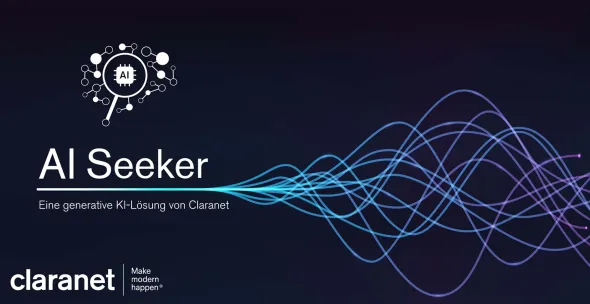The true impact of Microsoft 365 Copilot
In November 2023 we welcomed Microsoft 365 Copilot into our workspaces, excited by its promise to be our digital wingman, simplifying tasks and boosting productivity.
As we approach its first anniversary, many of us are still impressed by what Copilot can do. Still, we've also learned a few important lessons. It's time to move beyond the initial excitement and explore the realities of working with AI, including the caveats and considerations you should be thinking about. Let's dive into what we've learned so far.
The trust factor: Building confidence in your AI assistant
When Copilot was first introduced, the idea of an AI assistant that could manage emails, schedule meetings and draft documents sounded like a dream come true. But the more we got used to this new digital companion, the clearer it became that trust is mutual. Entrusting Copilot with routine tasks such as setting up reminders is one thing. However, when it takes on more complex tasks such as composing emails or preparing presentations, the issue of trust becomes more complex: how well does Copilot really understand the tone and context required in different situations? Or the style of your organisation and your brand guidelines? And more importantly, how well do you know its capabilities and limitations? Building trust in AI is not a process that happens overnight. It requires continuous interaction, training and yes, some mistakes along the way. Companies need to optimise the use of Copilot for M365 to adapt it to their specific needs and values. Regular updates and feedback loops are essential to ensure Copilot strikes the right tone and tone of voice.
The data dilemma: Balancing convenience with caution
AI, like Copilot, thrives on data. It's the fuel that powers its intelligence. As we near the one-year mark, we've seen how Copilot can use data from emails, documents and meetings to streamline workflows and provide valuable insights. But with great power comes great responsibility. While it's convenient to have Copilot process all this information, it's also raised important questions about data privacy and security. Who has access to the data Copilot is handling? Is it being stored securely, and does it comply with ever-evolving regulations like GDPR? Data security and ethical considerations have become top priorities. We've seen instances where biases in data have led to unintended consequences, such as poorly phrased communications or overlooked context. It's a reminder that AI is only as good as the data it's fed. Businesses must establish robust AI governance frameworks, ensuring their AI systems operate ethically, legally, and in line with company values. It's not just about protecting data; it's about using it responsibly.
The human touch: Maintaining the balance between AI and human skills
There's no denying that Copilot has taken over many of the mundane tasks that used to consume our workdays. But as we've grown more reliant on AI, it's crucial to consider the impact on our human skills and team dynamics. The efficiency gains are clear, but there's also a risk of over-reliance on AI, which can lead to losing essential skills. If Copilot is doing all the heavy lifting – drafting emails, creating reports, analysing data – what happens to our own abilities to perform these tasks? We've seen teams where the use of Copilot has created a divide between those who are 'AI-augmented' and those who aren't, impacting team cohesion and workplace culture. To strike the right balance, fostering an environment where AI enhances, rather than replaces, human skills is vital. Regular training, workshops, and open discussions can help ease the transition, ensuring everyone feels comfortable and capable of working alongside AI. Remember, the goal isn't to have AI take over but to work harmoniously with it. The real magic happens when human intelligence collaborates with artificial intelligence.
The 'why' question: Clarifying your purpose for using AI
When Copilot was launched, many organisations jumped on board, eager to embrace the latest technology. But now it’s settled into it’s new role the workplace, it's worth revisiting a fundamental question: Why are you using AI? Are you leveraging AI simply because it's the latest trend, or is it genuinely solving a problem for your organisation? The most effective use of technology is always purpose-driven. We've seen organisations with a clear understanding of their 'why', whether it's to improve efficiency, cut costs, foster innovation, or enhance customer experiences. Those that have been the most successful in integrating Copilot are the ones that know their ‘why’. Before expanding your use of Copilot or any AI, take a moment to reflect on your motivations. Are you looking for a quick fix, or are you committed to a long-term strategy that integrates AI meaningfully into your operations, and needs nurturing and regular input? Your 'why' will ultimately determine your 'how' and shape the success of your AI journey.
Where is Copilot a useful addition?
Not every area of work benefits equally from the use of Copilot. The key is to identify the right areas of application – where repetitive, document-intensive or time-consuming activities characterise everyday working life. Copilot is particularly useful in areas such as text generation, email summaries, data analysis, creating presentations or as support in meetings. At the same time, not every task is suitable for the use of AI. Especially where expertise, creativity, human judgement or emotional intelligence are required, humans remain indispensable. The trick is to use Copilot as a targeted supplement – not as a replacement. Those who realistically assess the potential will avoid frustration and provide real relief.
Who should use Copilot?
Copilot is not a one-size-fits-all tool and is far more than just an IT topic. In many organizations, the responsibility for testing and evaluating Copilot initially falls to the IT department. However, this approach often presents a challenge: administrators and IT managers typically lack comprehensive insight into the specific workflows and technical requirements of individual departments, which limits their ability to fully evaluate Copilot's actual value and impact.
A more effective and sustainable strategy involves implementing a champion program. This approach empowers employees with a strong interest in technology and AI – drawn from diverse specialist areas – to meaningfully integrate Copilot into their specific work contexts. These champions also act as guides for their departments, helping colleagues adopt and leverage Copilot effectively. By fostering a broad network of specialized expertise, this model not only accelerates Copilot's implementation but also drives cultural transformation toward a smarter, AI-supported way of working. Copilot delivers its maximum potential when the right individuals apply it in the right contexts, supported by an open learning culture and seamless cross-functional collaboration.
Find answers to your questions in the M365 Copilot Assessment
If you are still wondering how best to use Copilot or want to make sure you are on the right track, our Copilot Assessment can help. In a one-day workshop, we analyse your current challenges, needs and goals together and show you how you can make the best use of Copilot.



